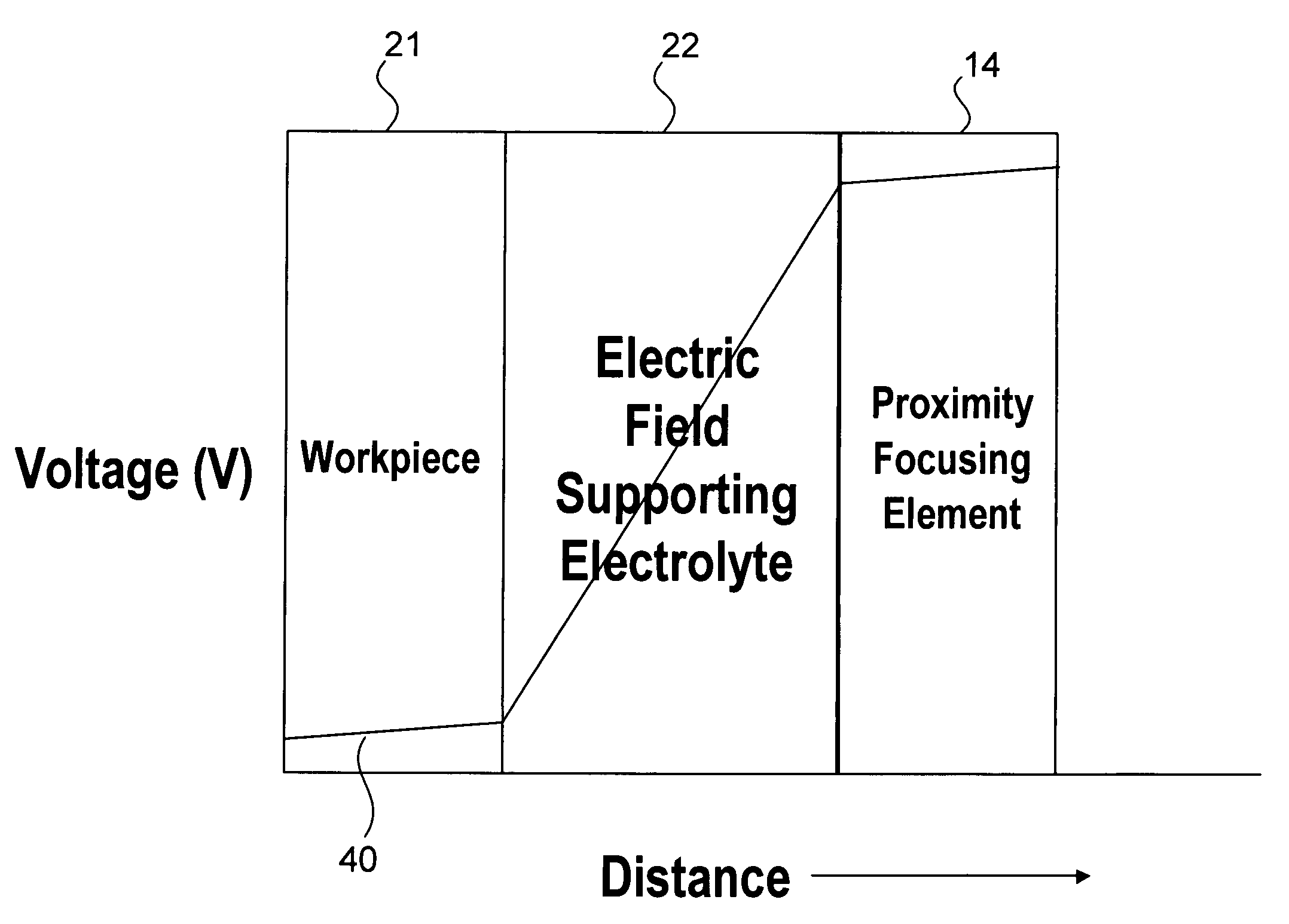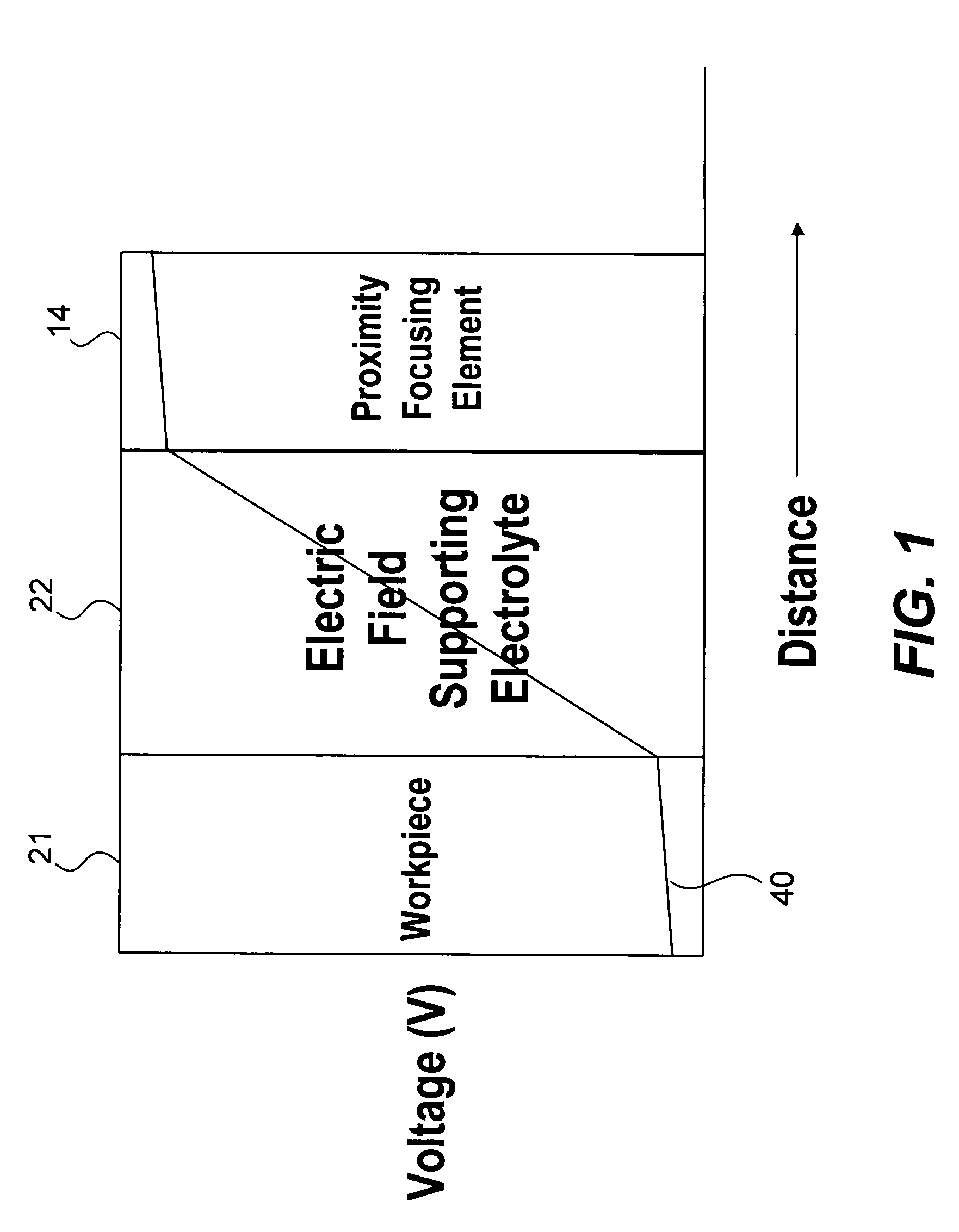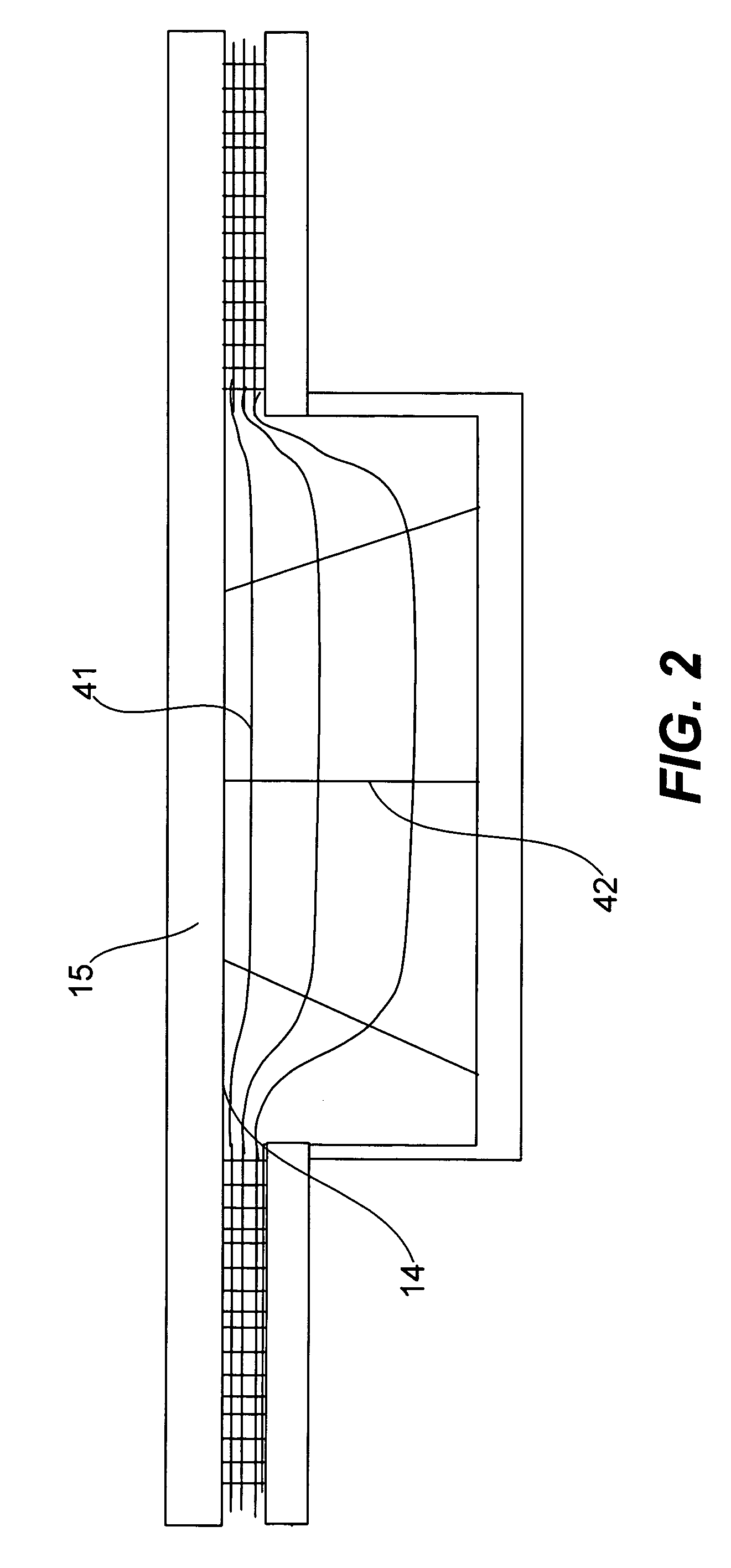Selective electrochemical accelerator removal
a selective electrochemical and accelerator technology, applied in the manufacture of electrolysis components, printed circuits, manufacturing tools, etc., can solve the problems of requiring significant excess metal deposition, requiring “overburden”, and low aspect ratio features that lose all metal below the dielectric plane. , to achieve the effect of reducing the extent of overplating, reducing the thickness of excess electroplating, and high aspect ratio
- Summary
- Abstract
- Description
- Claims
- Application Information
AI Technical Summary
Benefits of technology
Problems solved by technology
Method used
Image
Examples
example
[0101]The procedure to achieve these results is now described, but we are not implying that this is the only procedure or the optimal procedure. A 200 mm wafer was first sprayed with deionized wafer to wet the surface for 3 seconds, then sprayed with a 5% solution of sulfuric acid for 5 seconds to remove a surface oxide, followed by rinsing with a spray of DI water to remove the acid, followed by spraying with a solution containing 1 g / L MPSA in water for 10 seconds to uniformly accelerated the wafer. The wafer was then rinsed completely with water and then dried in air by spinning the wafer at 1500 rpm at about 20° C. (Despite rinsing and drying, the accelerant still remains attached to the surface). Next a SMMART EFIE head was passed over the surface at 50 cm / sec. The velocity was maintained constant by varying the rotation rate as a function of radial position of the head. Pure deionized water was used as an electric field supporting electrolyte. An approximately one molar soluti...
PUM
| Property | Measurement | Unit |
|---|---|---|
| electric field | aaaaa | aaaaa |
| electric field strength | aaaaa | aaaaa |
| area | aaaaa | aaaaa |
Abstract
Description
Claims
Application Information
 Login to View More
Login to View More - R&D
- Intellectual Property
- Life Sciences
- Materials
- Tech Scout
- Unparalleled Data Quality
- Higher Quality Content
- 60% Fewer Hallucinations
Browse by: Latest US Patents, China's latest patents, Technical Efficacy Thesaurus, Application Domain, Technology Topic, Popular Technical Reports.
© 2025 PatSnap. All rights reserved.Legal|Privacy policy|Modern Slavery Act Transparency Statement|Sitemap|About US| Contact US: help@patsnap.com



